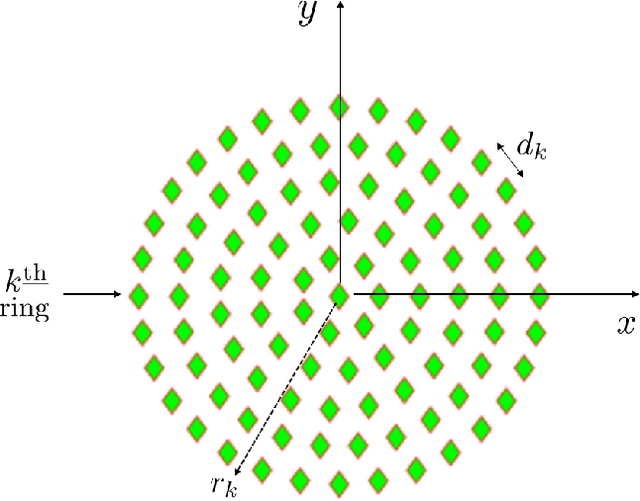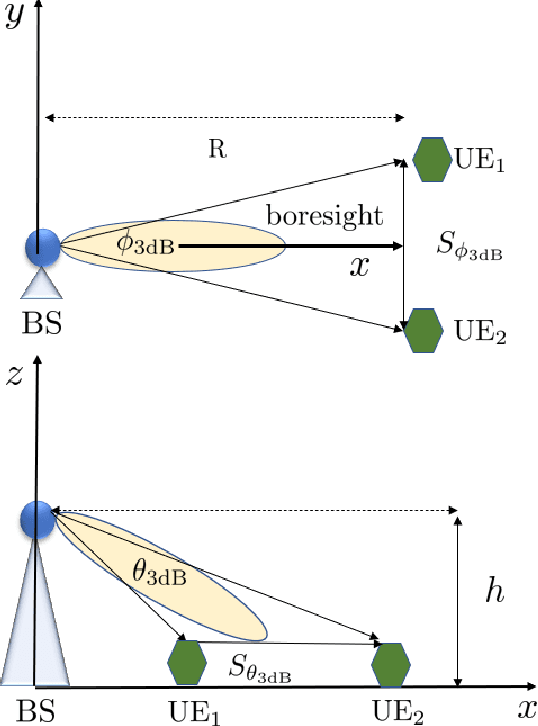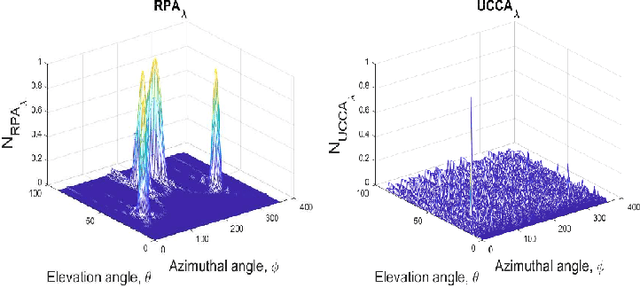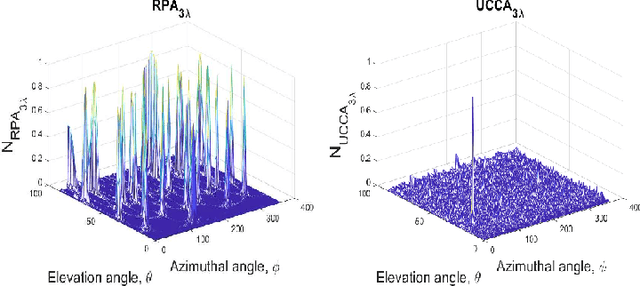Performance of Large Aperture UCCA Arrays in a 5G User Dense Network
Paper and Code
Mar 04, 2022



The transmitted signals in the fifth generation (5G) wireless networks suffer from significant path loss due to the use of higher frequencies in Sub-6 GHz and millimeter-wave (mmWave) bands. Inter-user interference in an ultra-dense network offers additional challenges to provide a high data rate. Therefore, it is desirable to generate narrow beams to extend the coverage of a 5G network by increasing antenna gain and improve its capacity by reducing the inter-user interference. This fact leads us to address the use of large aperture uniform concentric circular antenna (UCCA) arrays for 5G beamforming in massive multiple-input-multiple-output (MIMO) technology. Our analysis demonstrates that a UCCA with a larger antenna element spacing is capable of generating a significantly narrower beam with a moderate side-lobe level than a rectangular planar antenna (RPA) array while operating with the same number of antenna elements. This capability of the UCCA is analyzed to discover the performance gain of a 5G network.
 Add to Chrome
Add to Chrome Add to Firefox
Add to Firefox Add to Edge
Add to Edge